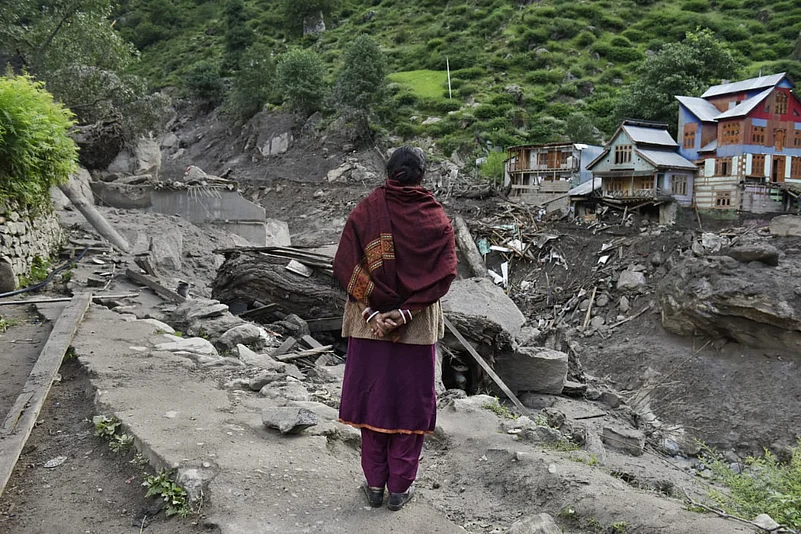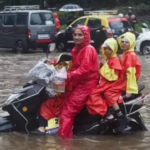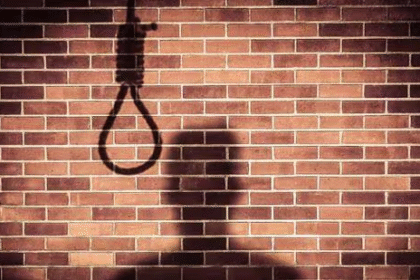Chisoti Flash Flood Leaves Village in Ruins, Residents Still Await Relatives’ Bodies
Chisoti (Kishtwar, J&K): At around 11:40 am on August 14, a group of children were rehearsing for the Independence Day celebrations at their school in Chisoti village of Jammu and Kashmir’s Kishtwar district when a strange and dreadful noise filled the air.
“I felt as if a VIP was coming to perform the yatra in a chopper which had crashed,” said Hukum Chand, a teacher at a government-run middle school in Chisoti.
Every year in July, this difficult village some 300 kilometres from Srinagar via NH-44 comes to life when hundreds of thousands of pilgrims from different states come to undertake a nine-km hike to the temple of Machail Mata, a sacred annual pilgrimage for the Hindus deep in the Himalayas.
Chisoti serves as the final basecamp of the pilgrimage which lasts more than three months and brings a lot of festivities and immense economic opportunities for the village’s few hundred locals.
So far this year, two lakh pilgrims have participated in the arduous journey under the watchful gaze of dozens of security personnel and disaster response officials who had been deployed in the village to facilitate the pilgrimage.
Before the yatra started on July 25, a large community kitchen came up in the village square catering to more than 5000 pilgrims every day. Around the kitchen, hundreds of stalls, mostly run by local residents, had sprung up selling food, mementos, cheap bangles, chains, earrings and other items to the pilgrims.
“On the morning of the fateful day,” recalled Joginder Singh, a resident of Chaisoti who recently completed postgraduate degree in botany from a university in Uttarakhand, “a heavy but brief spell of shower lashed the village”.
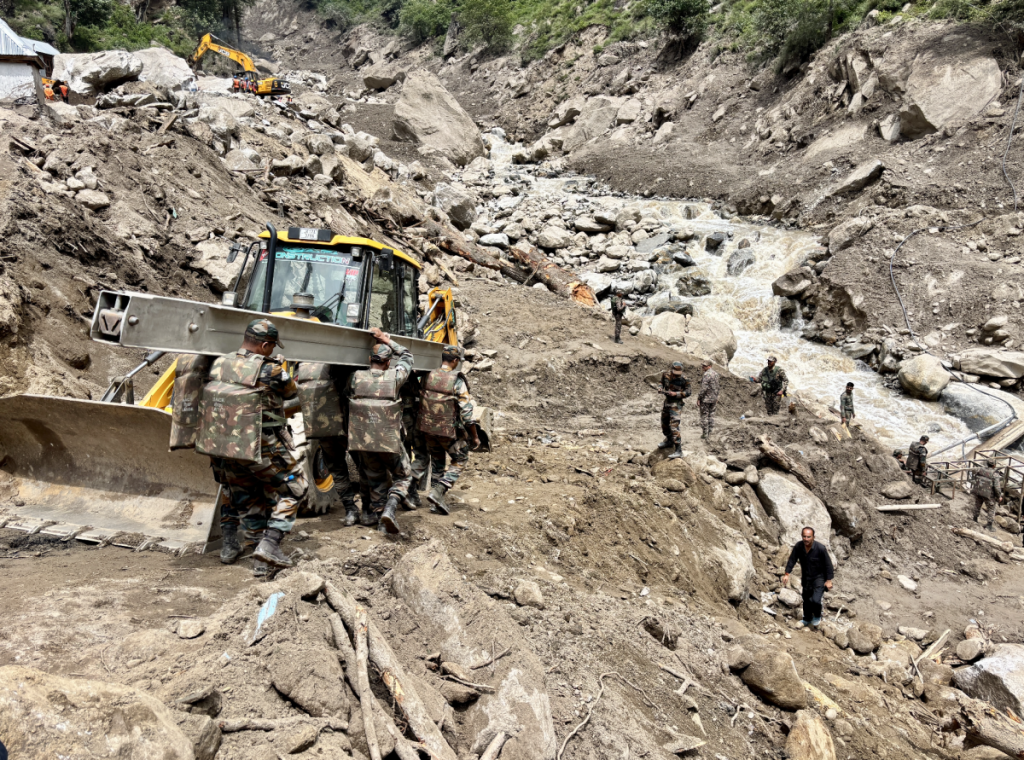
Sumit Solanki, an eyewitness and a small time trader from Madhya Pradesh, said that he was hawking miniature deities, toy drums and other mementos to the pilgrims when he saw a “wall of water, mud and trees” crashing down into the village from the mountain.
As the massive column of muddy water concealing uprooted trees and large boulders emerged from the mouth of the narrow Himalayan valley with a lethal force, panic broke out. The village’s two temples were among the first structures to face the wrath.
“It was a 50-60 feet high wall. I ran for my life and climbed up the mountain,” said Solanki.
The armageddon lasted barely a minute or two. Running for their lives, some pilgrims and local residents recorded the chaos on their smartphones. One video shows the dreadful column tearing the right bank of Bhot, spilling over and sweeping away some residential houses.
Tulsi Devi, a housewife, was waiting for her turn at the village watermill with a bag of barley down at the tributary when the incoming wave swallowed her. The bustling Kali Mata temple was swept away, too, along with Bhod Raj, the head priest, who was performing his religious duties.
“Our people have sinned,” said Meena Devi, Raj’s daughter, at their rundown home, “My father had been warning us. This is the curse of Mata Chandi. She has taken away our temples and our deities. It is a bad omen. We should not live here anymore”.
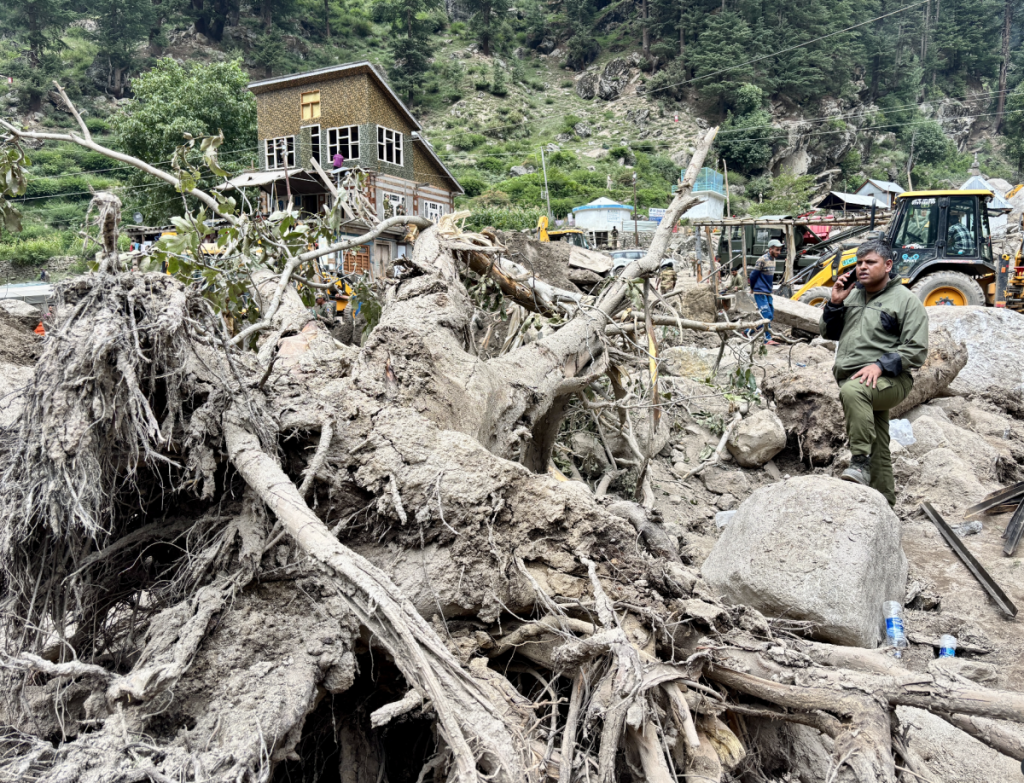
Like Raj, Dina Nath, the head priest of Nag Devta temple, was attending to the devotees of Mata Machail when the tragedy struck. His nephew Daljit Singh who ran a food stall managed to escape the fury of nature by running into the forest.
“When I returned, neither the temple was in its place nor my uncle was to be found. Everything was destroyed. We later found his body,” Singh said.
But not many victims and their family members have been as fortunate as Singh.
Three days after the tragedy, the agonising wait for the dead is far from over for Raj’s family and 86 other households who have reported members as missing.
According to official figures, around 70 people have been confirmed dead in the tragedy. Their bodies have been recovered. Around 110 have suffered injuries.
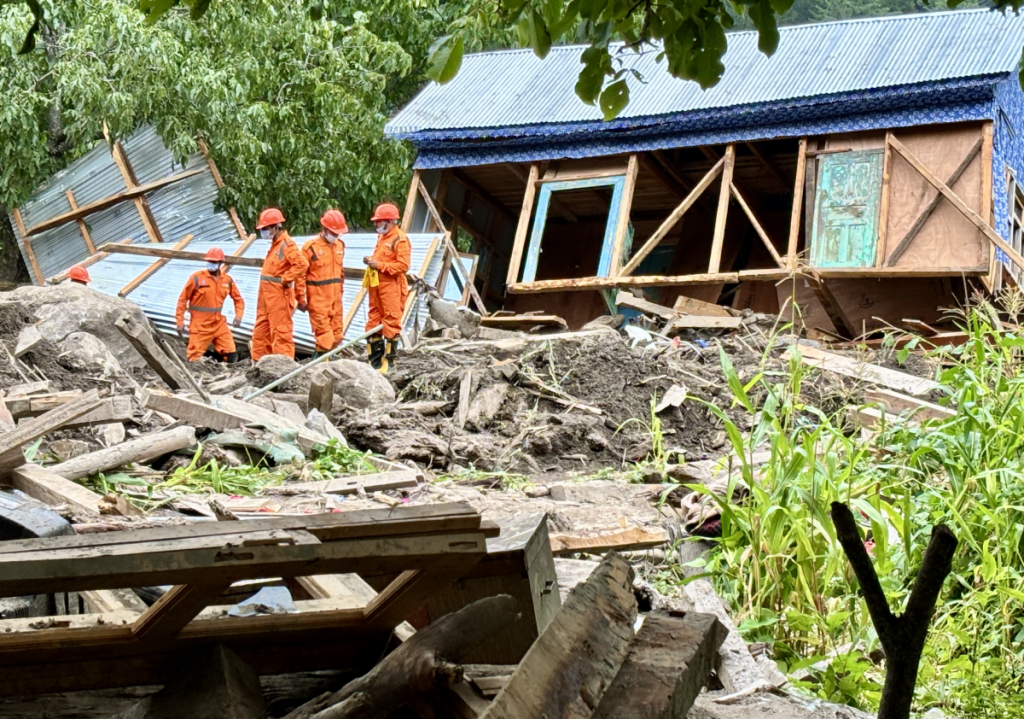
From dawn to dusk, several earth-moving machines and stone excavators struggle to undo the plunder. On August 17, two days after the tragedy, the army was preparing to set off explosives for disintegrating the massive boulders that have destroyed the village partially.
At least two more bodies were pulled out from the debris on August 17 but little seems to have changed about the village’s ruined geography.
The air in Chisoti is putrid, and with the dead believed to be buried underground, there are fears that the situation could worsen in the coming days.The alleged slow pace of rescue operations has built up anger in the village.
“For the last two days, anyone who comes here is more interested in taking photos. We don’t want anything. We only want the dead bodies,” Happy Singh screamed at J&K chief minister Omar Abdullah who visited the village on August 16.
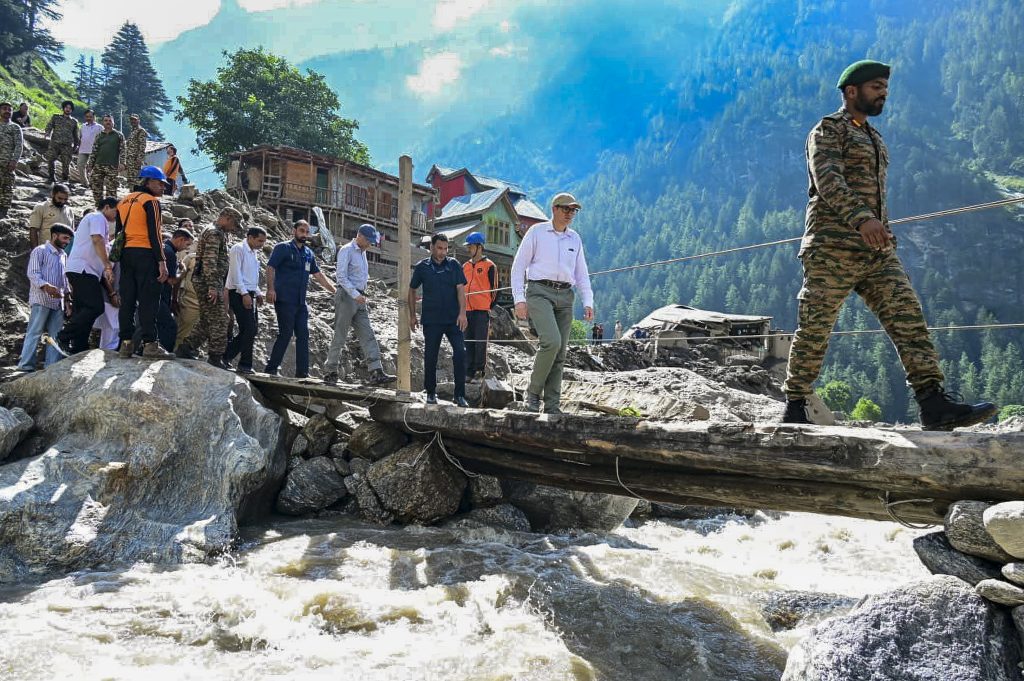
Along with his cousin, Singh has been camping in the village since August 15 and searching for his mother and aunt along with 17 others from their native Bari Brahmna area of Jammu who are among the missing persons.
As the dreadful column of muddy water crashed into Chenab river and a shallow stream of sludge replaced it, Chand guided the school children further away from Bhot and hiked up into the forest where they watched hundreds of anguished men, women and children, many of them barefooted, screaming in shock and agony, running for their lives.
It was all over in less than two minutes, said Chand.
When the worst had passed, the young school teacher returned to the village along with a group of cooks who were working at the community kitchen at the time of the tragedy and had managed to escape in the nick of time.
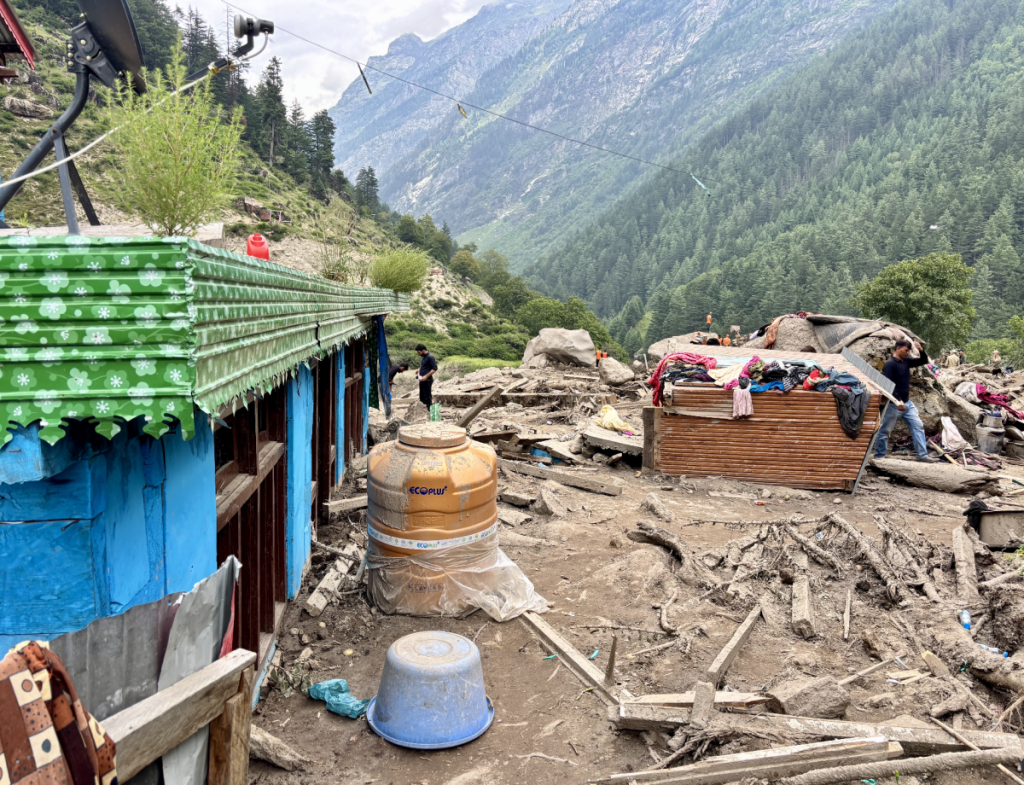
The massive column of water that came down the mountain had swept away the under-construction bridge over Bhot. Across the tributary, Chand saw his and his brother’s home badly damaged. When he looked down into the tributary, dead bodies were scattered on the riverbank. The injured, covered in mud, were screaming for help.
“Beneath the rubble, I saw a human hand making movements. We dug with our bare hands and retrieved a woman. She took a long gasp when her face became visible. She was lucky to have survived,” Chand said.
The young teacher said that the rescue workers took an hour or so to build a river crossing using logs and planks of wood.
Having finally made it across the tributary, Chand started searching for his brother, his wife and their daughter beneath the debris but he wasn’t so fortunate. The dead bodies were located and recovered from the very home which had protected them all these years.
With dozens of army soldiers and disaster response force officials racing against time to locate the dead, chances of finding more survivors have faded out.
“We have been working from dawn till dusk for the last two days,” said Shakeel Hussain, an official with J&K’s State Disaster Response Force, “Rain hampered our work initially and it will take seven days or even more to complete the searches”.
Also Read: Mumbai Weather Today: Live Updates as Heavy Rains Bring Traffic Chaos and School Closures


